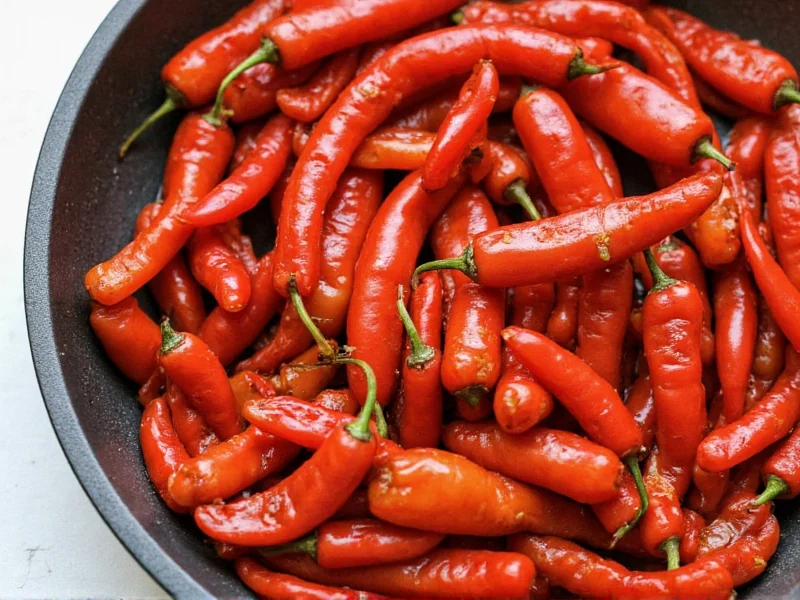Immediately add dairy like milk or sour cream, incorporate acid such as lime juice, or introduce sweetness with sugar to calm down spicy chili. These methods work because capsaicin (the compound causing heat) is fat-soluble and can be neutralized by dairy proteins, while acid and sweetness balance the flavor profile. Start with small amounts and taste as you go to avoid overcorrecting.
Understanding Why Your Chili Became Too Spicy
Chili often becomes overly spicy due to miscalculated measurements of hot peppers, cayenne pepper, or chili powder. The capsaicin in these ingredients is oil-soluble and binds to receptors in your mouth, creating that burning sensation. Understanding how to reduce spiciness in chili without compromising flavor requires knowing how to counteract this compound effectively.
Top 10 Effective Methods to Calm Down Spicy Chili
1. Dairy Products: The Capsaicin Neutralizer
Dairy contains casein, a protein that breaks down capsaicin molecules. Add these dairy options gradually:
- Milk (whole works best due to higher fat content)
- Sour cream or Greek yogurt (stir in at the end)
- Cheese (cheddar or Monterey Jack melt well)
- Cream or half-and-half for richer chili
For how to make spicy chili less spicy with milk, start with 1/4 cup and increase as needed. Remember that dairy added at the end won't distribute heat evenly throughout the entire pot.
2. Acidic Ingredients: Flavor Balancers
Acids help balance the pH and distract your taste buds from the heat. Effective options include:
- Fresh lime or lemon juice (start with 1 tablespoon)
- Vinegar (apple cider works well with chili)
- Tomato products (sauce, paste, or diced tomatoes)
- Pickled jalapeños (adds tang while maintaining chili character)
Acid works particularly well for how to tone down spiciness in already cooked chili because it doesn't alter the fundamental texture.
3. Sweetness: The Heat Counterbalance
Sugar molecules bind with capsaicin, reducing the burning sensation. Use these sweeteners:
- White sugar (1 teaspoon at a time)
- Honey or maple syrup (adds flavor complexity)
- Shredded carrots (adds natural sweetness while cooking)
- Corn or sweet potatoes (bulk ingredients that mellow heat)
When addressing how to fix chili that's too spicy with sugar, be careful not to make your chili taste overtly sweet—balance is key.
4. Volume Increase: Dilution Method
Adding more non-spicy ingredients effectively reduces the concentration of capsaicin:
- Beans (kidney, black, or pinto)
- Tomatoes (diced or crushed)
- Vegetables (onions, bell peppers, zucchini)
- Broth or stock (maintains liquid consistency)
This approach works best for how to make chili less spicy without changing flavor significantly, though it does increase the total quantity.
| Method | How Much to Add | Time to Simmer | Best For |
|---|---|---|---|
| Dairy | 1/4 cup increments | 5-10 minutes | Immediate relief, last-minute fixes |
| Acid | 1 tbsp increments | 5 minutes | Balancing already cooked chili |
| Sweetness | 1 tsp increments | 10 minutes | Counteracting intense heat |
| Volume Increase | 1-2 cups ingredients | 15-20 minutes | Preventing flavor distortion |
What Not to Do When Fixing Spicy Chili
Certain approaches can worsen your situation when trying how to reduce heat in chili:
- Don't add more spices—this compounds the problem
- Avoid excessive water—dilutes flavor without neutralizing capsaicin
- Don't serve immediately after adding fixes—allow 10-15 minutes for flavors to meld
- Don't use alcohol—it can intensify the heat sensation
Contextual Limitations of Heat-Reduction Methods
While these techniques are effective, their success depends on dietary restrictions and recipe composition. Key boundaries to consider:
- Dairy solutions fail for lactose-intolerant individuals (affecting 65% of the global population per NIH). Coconut milk serves as a verified fat-based alternative that neutralizes capsaicin [University of Maryland Extension].
- Acidic additions risk over-tartness in tomato-dominant recipes. The National Center for Home Food Preservation confirms that excess acid disrupts flavor equilibrium without reducing capsaicin [NCHFP].
- Sweeteners compromise authenticity in traditional Tex-Mex chili. Culinary historians note that pre-1970s Texan recipes rarely included sugar, as documented by the Texas Department of Agriculture.
Preventing Overly Spicy Chili in the Future
The best solution for how to calm spicy chili before it happens involves proper preparation:
- Measure spices carefully—don't eyeball hot ingredients
- Add spices gradually, tasting as you go
- Remove seeds and membranes from fresh peppers (where most capsaicin resides)
- Use mild chili powder as a base, adding hotter elements sparingly
- Keep dairy or acid nearby while cooking for quick adjustments
Chili Heat Reference: Scoville Scale Comparison
Understanding ingredient heat levels prevents over-spicy results. This verified reference (per Chile Pepper Institute research) shows capsaicin concentrations:
| Ingredient | Scoville Heat Units (SHU) | Practical Impact in Chili |
|---|---|---|
| Bell Pepper | 0 SHU | No heat contribution; safe for volume increases |
| Jalapeño (fresh) | 2,500–8,000 SHU | 1 pepper = moderate heat; remove seeds to halve intensity |
| Cayenne Powder | 30,000–50,000 SHU | 1/4 tsp = significant heat spike; measure precisely |
| Habanero | 100,000–350,000 SHU | 1/4 pepper = extreme heat; use only in specialized recipes |
Source: Chile Pepper Institute, New Mexico State University
Special Considerations for Different Chili Types
Tex-Mex chili benefits most from dairy additions, while Cincinnati-style chili responds better to acid. For how to fix extremely spicy chili that uses multiple hot peppers, combine methods—start with volume increase, then fine-tune with dairy and acid.
Final Thoughts on Managing Chili Heat
Successfully calming down spicy chili requires understanding the science behind heat perception and having multiple approaches ready. The most effective strategy for how to make spicy food less spicy in chili often combines several methods rather than relying on just one. Remember that patience is crucial—allow time for adjustments to integrate fully before serving.











 浙公网安备
33010002000092号
浙公网安备
33010002000092号 浙B2-20120091-4
浙B2-20120091-4